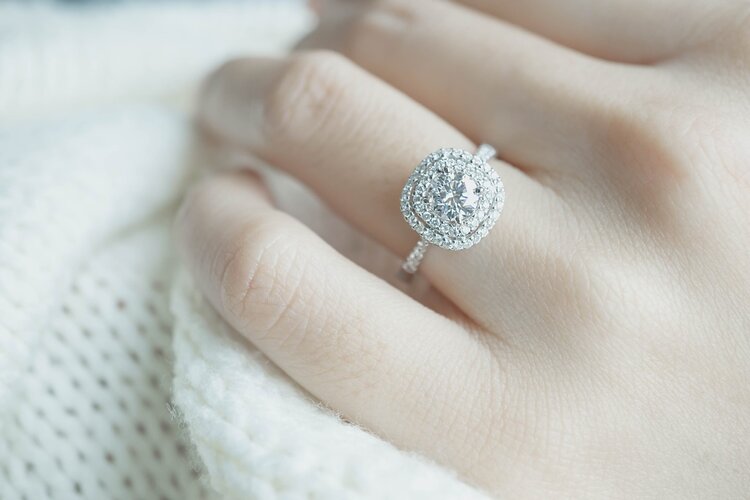
Diamonds are one of the hardest substances on Earth. They're made of carbon and can be found in nature in all sorts of different colors. But what if you want a diamond that's even more special than that? What if you want a diamond that's perfectly clear, perfectly colorless and perfectly white? That's where lab-grown diamonds come in. These man-made stones have some pretty impressive properties — they're just as hard as natural diamonds and they have the same chemical composition.
While diamonds are one of the hardest materials on earth, they are not indestructible. Diamonds are formed over millions of years under intense heat and pressure within the earth's mantle. This can make it difficult to artificially grow diamonds in a lab. However, with some amazing technology and scientific knowledge, it is possible to create synthetic diamonds that are nearly identical to those found in nature. In the next sections we will learn how exactly lab grown diamonds are made.
The two methods to produce lab grown diamonds
The process of growing a diamond in a lab is not simple, as lab-grown diamonds are produced by replicating the natural process of diamond formation in a laboratory. There are two main methods used to grow these types of diamonds, which are CVD (chemical vapor deposition) and HPHT (high pressure high temperature).

Chemical vapor deposition (CVD)
CVD is used to create synthetic diamonds that are optically and chemically identical to natural diamonds, but they cost significantly less than mined diamonds. The cost savings come from the fact that CVD diamonds don’t have to be mined out of the ground like natural diamonds do. Instead, they can be grown in a lab using equipment that costs less than $100,000 and requires very little maintenance or upkeep over time. The process takes about two weeks and produces a gem that's about 10 millimeters wide, which is about the size of a pencil eraser.
The CVD process was developed in 1955 by Soviet scientist A.N.Filippov at the Lebedev Physical Institute in Moscow, who found that diamond crystals could be grown by passing an electric current through a hydrogen-rich gas mixture of methane, ammonia and hydrogen chloride. He also discovered that adding boron or silicon to the gas mixture would help improve the quality of the resulting diamond crystals. The first commercial production of synthetic diamonds using CVD took place in 1964 at General Electric's Research Laboratories in Schenectady, New York. The following year, GE's John Kuczynski filed a patent for an improved method of growing large single crystals of diamond in an inert atmosphere using microwave energy instead of electricity.
In this process, a mixture of gasses containing carbon (the growth material), hydrogen and other elements is heated under high pressure in a chamber called a reactor. As this mixture gets hotter, it begins to react with itself. The gas becomes unstable, so some of its molecules break apart into single atoms or small clusters of atoms called radicals. The radicals then attach to other radicals that already exist within the reactor chamber and form larger clusters through chemical reactions with each other. Eventually, these large clusters grow into tiny diamond crystals that collect on the walls of the reactor chamber as they continue to grow larger over time. The resulting diamond formed can then be cut into a faceted diamond shape.
CVD Diamond has all the physical properties of natural diamonds: hardness, luster, brilliance and color. The diamonds made with this method are also chemically pure diamonds, as they don't contain nitrogen and boron impurities. CVD diamonds are reported to have what looks like "strain lining" as a result of their growing process. However, you likely wouldn't be able to see these lines with the naked eye as you would need a jeweler's loupe to see them. Some of the CVD diamonds are also known to glow fluoresce colors like under UV light.
High pressure high temperature (HPHT)
In the 1930s, researchers began growing synthetic diamonds in a controlled environment at high temperatures and pressures similar to those found deep inside the Earth. These so-called HPHT or high pressure high temperature diamonds were produced in labs around the world until the late 1960s when commercial production of these gems was halted due to environmental concerns over the use of high levels of carbon monoxide gas during their manufacture. Today, scientists have found safer ways of producing HPHT diamonds using hydrogen as a reducing agent instead of carbon monoxide gas. This process allows them to create larger gem-quality stones that can be used in jewelry settings without sacrificing quality or durability.
The process begins with a tiny seed diamond crystal which is called diamond seeds. The seeds are then placed inside a container and subjected to extreme conditions in a pressurized environment. The chamber is heated to extreme temperatures up to 700 degrees Celsius (1,292 degrees Fahrenheit), which causes the gasses to react and form carbon atoms. The extreme pressure and high temperature cause the carbon atoms within the seed diamond to rearrange themselves. This process is repeated until the right amount of pressure has been achieved and larger crystals are formed over time, at which point the chamber is cooled down and opened. It takes at least two days for 1ct rough to grow and multiple crystals can grow in one capsule. The resulting larger diamonds are then cut into round brilliant shapes and polished into beautiful pieces of jewelry just like mined diamonds.
HPHT diamonds are more likely to have a yellowish hue due to exposure to nitrogen while forming. They also tend to have darker inclusions, which are metallic. These metallic inclusions can help scientists identify them as lab-grown because naturally formed diamonds rarely capture metals during formation. HPHT diamonds' magnetic properties also help us tell if they are lab-grown, as natural diamonds and CVD diamonds are not magnetic.
Conclusion
Whether you are interested in the lab-grown alternative or not, at the very least, knowing how they're made could have you asking fewer questions to your jeweler. Their system is similar to the one used for natural diamonds, so lab grown stones are compatible with the same jewelry settings and engagement rings as mined diamonds. As demand increases and production ramps up, it's likely that lab grown diamonds will become a larger part of the market, however it remains to be seen whether technological improvements will allow for large scale production in the future.


